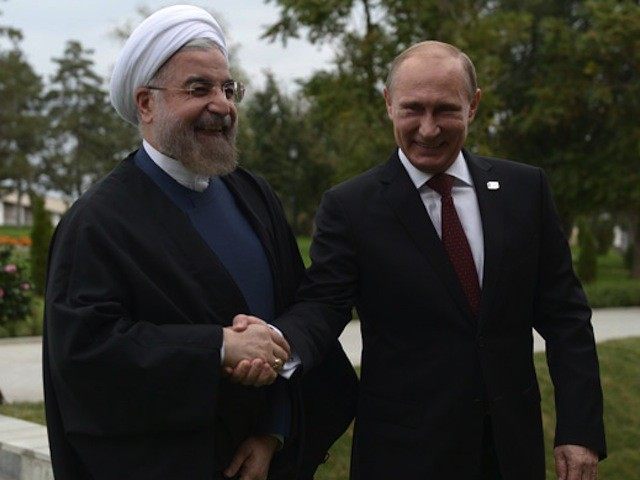With sanctions about to be lifted, Iran unveiled a “new model” for a 25-year joint-venture oil and gas production contract on terms favorable to foreign companies in an effort to recruit $100 billion in foreign capital to break Russia’s natural gas monopoly in Europe.
Iran announced that it will dramatically enhance foreign joint-venture profitability by issuing new contracts to cover 50 oil and gas drilling and production projects. The term lengths will quintuple to 25 years, full recovery of costs will be allowed for the first time, and output that exceeds the contract expectations will be favorably shared with the foreign partner.
The new Iranian contract terms are also meant to undercut the contract terms of its adversary, Saudi Arabia.
Prior to sanctions, Iran was producing about 4.1 million barrels of oil per day (mb/d), with about 600,000 mb/d exported to Europe in 2012. Production tumbled with the 2012 sanctions to an average of 2.7 mb/d, but has moved up recently to about 3.1 mb/d on expectations of open export in the near future.
Pre-sanctions oil production could have been closer to 5 mb/d. But Iran only offered five-year drilling contracts to foreign oil companies, and mandated that all crude be sold to the government at steep discount prices to world markets, so the Iranian government could refine and sell gasoline at its current $1.16-per-gallon price.
Although most analysts are concentrating on Iran’s oil production opportunities, Iran has had the fastest growing natural gas reserves in the world in each decade since the 1980s. At 1,200 trillion cubic feet of gas (tcfg), Iran has the second-largest gas potential on the globe, with about 70 percent of Russia’s reserves and three times U.S reserves. Ending Iranian sanctions is an effort by European leaders to tap Iran’s massive natural gas reserves in order to undermine the continent’s dependence on Russia.
Before sanctions, foreign companies faced even harsher rules–which explains why Iran’s natural gas exports were “approximately $10.5 million per day, or about 5 percent of the estimated $231 million per day in revenues from crude oil and condensates exports over the same period,” according to the U.S. Energy Information Agency (EIA).
Iran and Qatar share the same massive natural gas field, which straddles the Persian Gulf over an area of 9,700 square kilometers. The 3,700 square kilometers in Iran’s territorial waters are referred to as the South Pars. The remaining 6,000 square kilometer area in Qatar’s territorial waters is called the North Dome.
North Dome has been in development for many decades and generated $86 billion in export revenue last year. But Iran’s richer South Pars field only began modest development, by France’s Total oil group, in 1998. The project made modest progress, but was completely stopped in 2012 due to sanctions.
South Pars is divided into 29 development phases that contain at least 1,000 trillion cubic feet of natural gas. In March, Iran began a $7 billion supposedly self-funded effort to develop South Pars.
Most commentators are talking about Iran’s post-sanctions deals being valued at $30 billion. But that assumes foreign investments will focus mostly on pushing oil production up to 5 million barrels a day.
The big prospect is the massive $70 billion investment play in Iranian natural gas. The “Persian” pipeline to Western Europe will cost about the same as Russia’s $40 billion investment in its planned South Stream Pipeline to Southern Europe.
But in less than a decade, foreign investment in Iran has the potential to break Russia’s European natural gas monopoly.

COMMENTS
Please let us know if you're having issues with commenting.